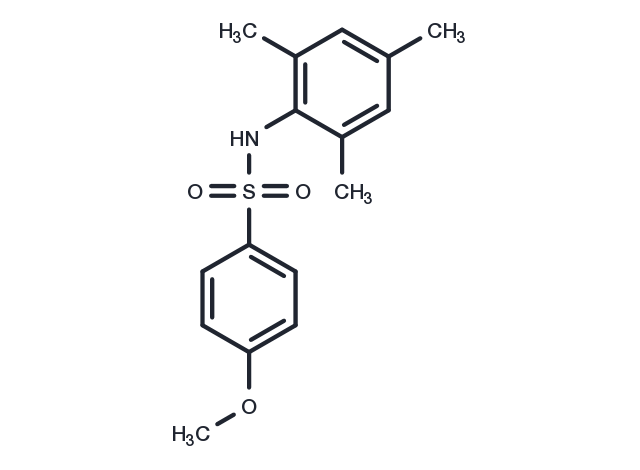Powder: -20°C for 3 years | In solvent: -80°C for 1 year


GSK137647A (GSK 137647) is a selective FFA4 agonist.

| Pack Size | Availability | Price/USD | Quantity |
|---|---|---|---|
| 2 mg | In stock | $ 30.00 | |
| 5 mg | In stock | $ 47.00 | |
| 10 mg | In stock | $ 77.00 | |
| 25 mg | In stock | $ 157.00 | |
| 50 mg | In stock | $ 257.00 | |
| 100 mg | In stock | $ 447.00 | |
| 200 mg | In stock | $ 646.00 | |
| 500 mg | In stock | $ 987.00 | |
| 1 mL * 10 mM (in DMSO) | In stock | $ 52.00 |




| Description | GSK137647A (GSK 137647) is a selective FFA4 agonist. |
| Kinase Assay | HDAC-inhibitory activity: For the enzyme assay, 10 μL of [3H]acetyl-labeled histones (25,000 cpm/10 μg) are added to 90 μL of the HDAC enzyme fraction extracted from 293T cells overexpressing HDAC1 or HDAC2 in the presence of increasing concentrations of Romidepsin, and the mixture is incubated at 37 °C for 15 minutes. The enzyme reaction is linear for at least 1 hour. The reaction is stopped by the addition of 10 μL of concentrated HCl. The released [3H]acetic acid is extracted with 1 mL of ethylacetate, and 0.9 mL of the solvent layer is taken into 5 mL of aqueous counting scintillant II solution for determination of radioactivity. The IC50 values are determined from at least three independent dose-response curves. |
| Synonyms | GSK 137647 |
| Molecular Weight | 305.39 |
| Formula | C16H19NO3S |
| CAS No. | 349085-82-1 |
Powder: -20°C for 3 years | In solvent: -80°C for 1 year
DMSO: 50 mg/mL (163.73 mM)
H2O: < 0.06 mg/mL (insoluble or slightly soluble)
You can also refer to dose conversion for different animals. More
bottom
Please see Inhibitor Handling Instructions for more frequently ask questions. Topics include: how to prepare stock solutions, how to store products, and cautions on cell-based assays & animal experiments, etc.
GSK137647A 349085-82-1 Endocrinology/Hormones GPCR/G Protein GPR Free Fatty Acid Receptor FFA1 FFAR insulin secretion FFA3 GSK-137647 FFA4 inhibit GSK-137647A Inhibitor GSK137647 anti-inflammatory epithelial ion transport GSK 137647 FFA2 inhibitor
